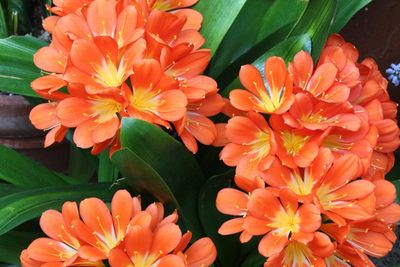About Clivia Lilies
Clivia lilies (Clivia miniata) are also called bush lilies and kaffir lilies, although the latter name is not very popular, as it’s considered a derogatory and insulting word. Native to South Africa and part of the Amaryllis family, this plant does not tolerate frost. It grows in clumps and is a perennial that reaches heights of about 30 inches (76 cm.) when in flower. Clivia produces long, broad, evergreen leaves and pretty, lily-like flowers that are trumpet-shaped and that cluster together. Orange is the most common flower color in bush lily plants, but as their popularity grows, new cultivars are being developed to give more color options. Indoor care for clivia lily houseplants is easy: just pot and water regularly and you will get spectacular blooms. Be aware that this plant is toxic, though.
Growing Clivia Lilies Outdoors
Outdoor clivia lily care may be a little more involved, but it is also limited. This plant is only hardy in zones 9 through 11. Warm coastal climates are ideal for clivia; otherwise, keep this as a houseplant or an addition to a greenhouse. For clivia lily, outdoor requirements include more than just a frost-free garden. You also need to provide it with soil that drains well and a spot that is at least partially shady. Your clivia lily will bloom in the spring, so keep it relatively dry through the fall and winter, and start watering more regularly in the late winter and early spring. These flowers should be planted at least one foot (0.5 m.) apart and be allowed to grow into large clumps over several years. You can propagate your larger plants by dividing them but only do this in the spring or summer after the flowers are done blooming, never in the winter. When flowers are spent, trim them off to avoid energy being expended on seed production.
